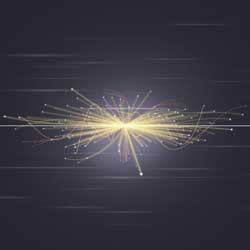Hadron structure and strong coupling
The Standard Model of particle physics now states that there are 12 elementary matter particles, a Higgs boson and four force carrier particles. Hadrons, like protons and neutrons, are not elementary particles, but made up of the elementary matter particles called quarks. The quarks are bound by gluons, elementary force particles that mediate the strong interaction that, among other things, is responsible for holding like-charged protons in the nucleus. Scientists used Monte Carlo simulations to unveil the structure of hadrons and to provide precision measurements of the strong coupling constant with EU funding of the project 'Precision lattice QCD calculations' (PRECISION LATTICEQCD). Monte Carlo simulations, only possible since the advent of supercomputers, rely on repeated random sampling. They stochastically solve the path integrals of QCD using many different input sets of random numbers (typically more than 10 000). Monte Carlo simulations have been very important in providing estimates of quantities inaccessible or difficult to measure with experiments, and the field of quantum chromodynamics (QCD) is no exception. As part of the Standard Model, QCD is the theory of the strong interaction between quarks and gluons. At large energies, QCD can be treated perturbatively. However, outside this realm, QCD becomes much more complicated and predictions are difficult. Enter lattice QCD, a 'digitised' QCD where discrete points exist in Euclidean space–time (the lattice). There are no assumptions and approximations and well-established and powerful Monte Carlo simulations can now be used. Exploiting lots of time on different parallel supercomputing systems, the team assimilated a wealth of lattice data for hadronic structure functions and the strong coupling constant. They introduced a new method to treat certain artifacts (hypercubic lattice artifacts) inherent in many of these and other lattice observables that will make future analyses and conclusions less uncertain and more accurate. Results will impact numerous physical problems in elementary particle physics. They could help power searches for physics beyond the Standard Model, and they will certainly support new experiments in reaching beyond the physically measureable to the physically possible.
Keywords
Hadron structure, strong coupling, lattice QCD, Monte Carlo simulations, quantum chromodynamics



